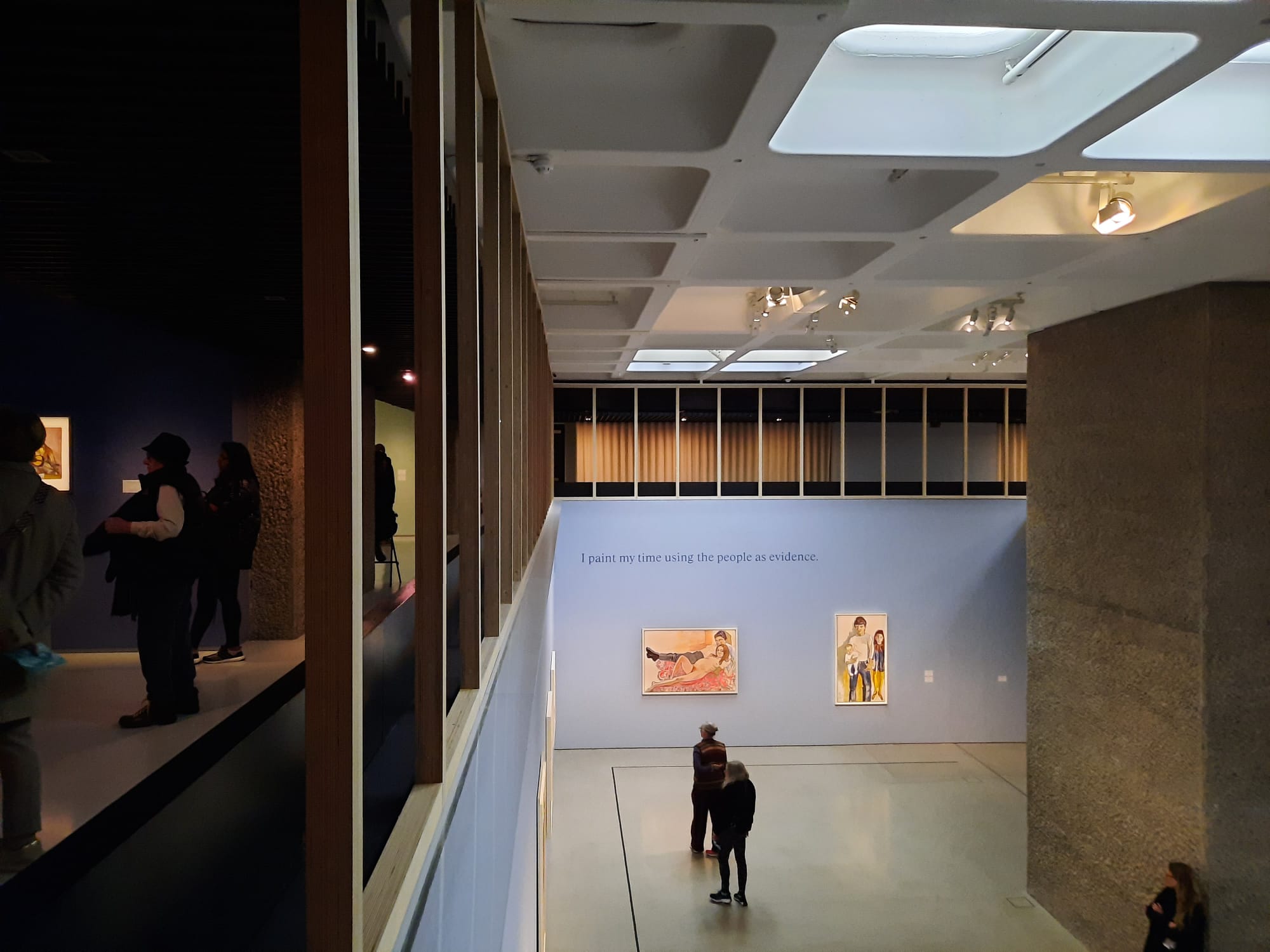Alice Neel: Hot Off The Griddle – Barbican, London
The largest exhibition to date in the UK of work by Alice Neel, this exhibition at the Barbican celebrates an artist who did things her own way.
Warning: some images below NSFW.



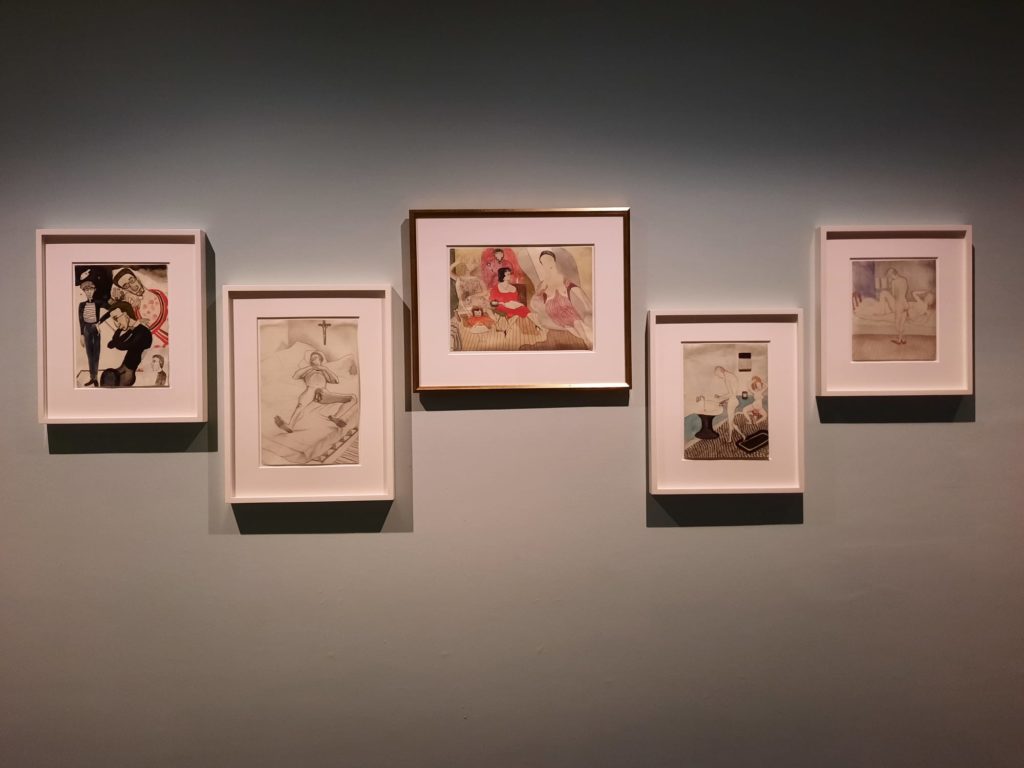
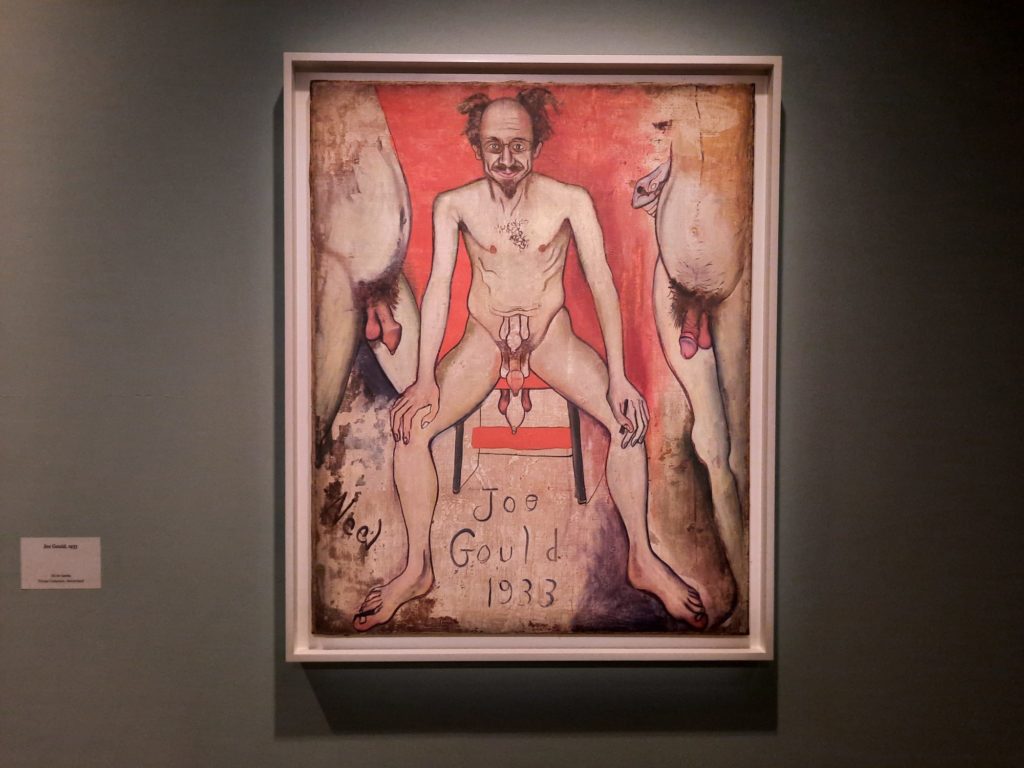
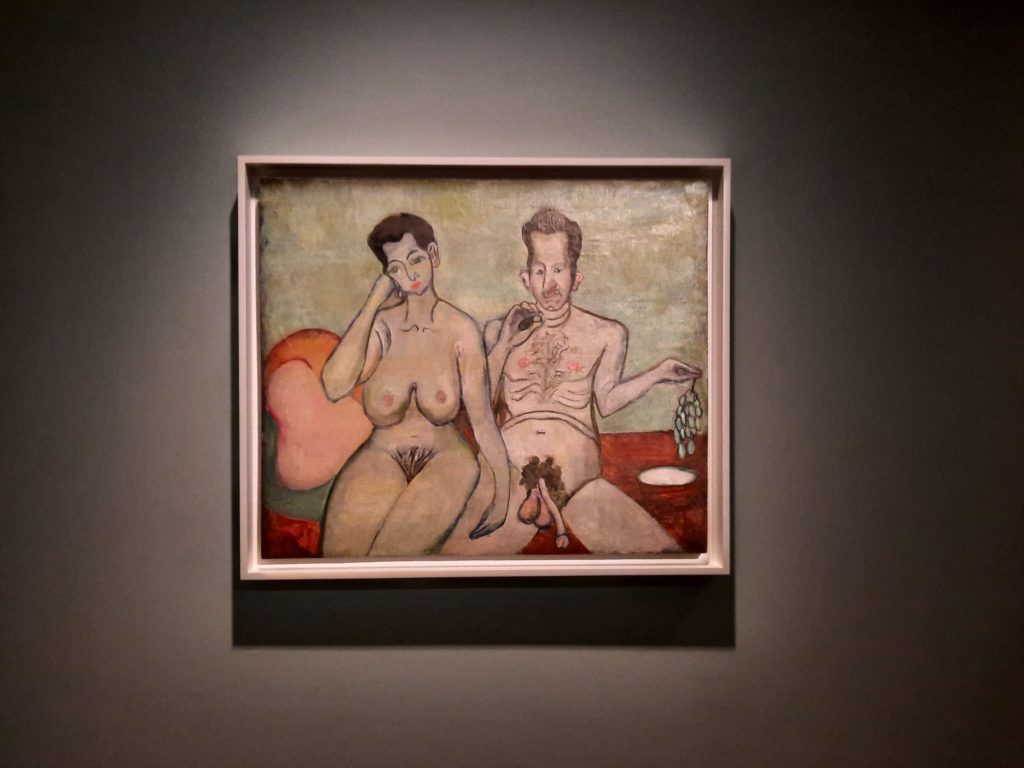
Alice Neel
I very much enjoyed learning more about Alice Neel in Alice Neel: Hot Off the Griddle, the current exhibition at the Barbican Centre. Neel is an important figure in 20th Century American art, but perhaps less well known than she deserves to be. Maybe because she was a female artist. Maybe because she painted figuratively when Abstract Expressionism was the order of the day. Or maybe both.
Her story begins in 1900. Alice Neel grew up in a small, conservative town in Pennsylvania. She knew she wanted to be an artist from a young age, and broke away from familial expectations in order to enrol in the Philadelphia School of Design for Women in 1921. At a summer school while an art student she met Cuban artist Enríquez Gómez. They married in 1925 and moved to Cuba. A period of great hardship followed when their first daugher, Santillana, died of diphtheria. Neel had a nervous breakdown, during which time Gómez sent their second daughter, Isabetta, to live with his family. The relationship broke down and Neel moved to New York after long periods in a psychiatric hospital.
This insight into how Neel’s personal and professional lives intertwined continues throughout the exhibition. What comes across very clearly is that Neel was a woman of principle, a life-long socialist who related easily to people from all works of life. This correlates directly with her decision to paint figuratively. Figurative art was very unfashionable in mid-20th Century America. But as Neel herself put it: “I’m not against abstraction. Do you know what I’m against? Saying that Man himself has no importance.”
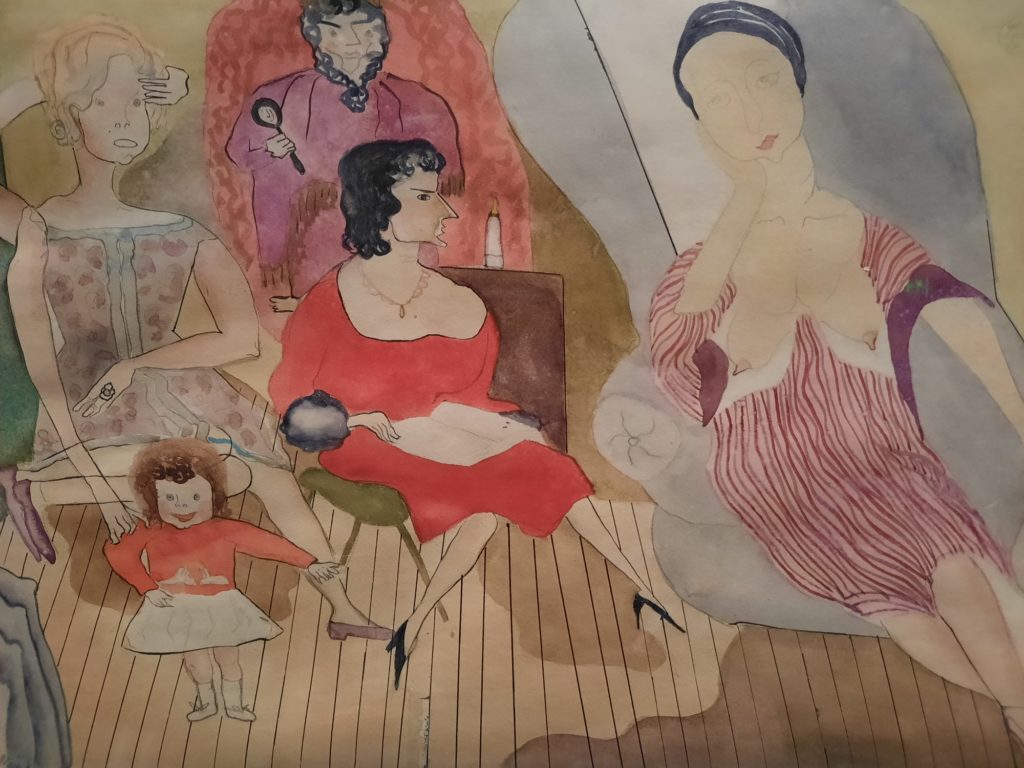

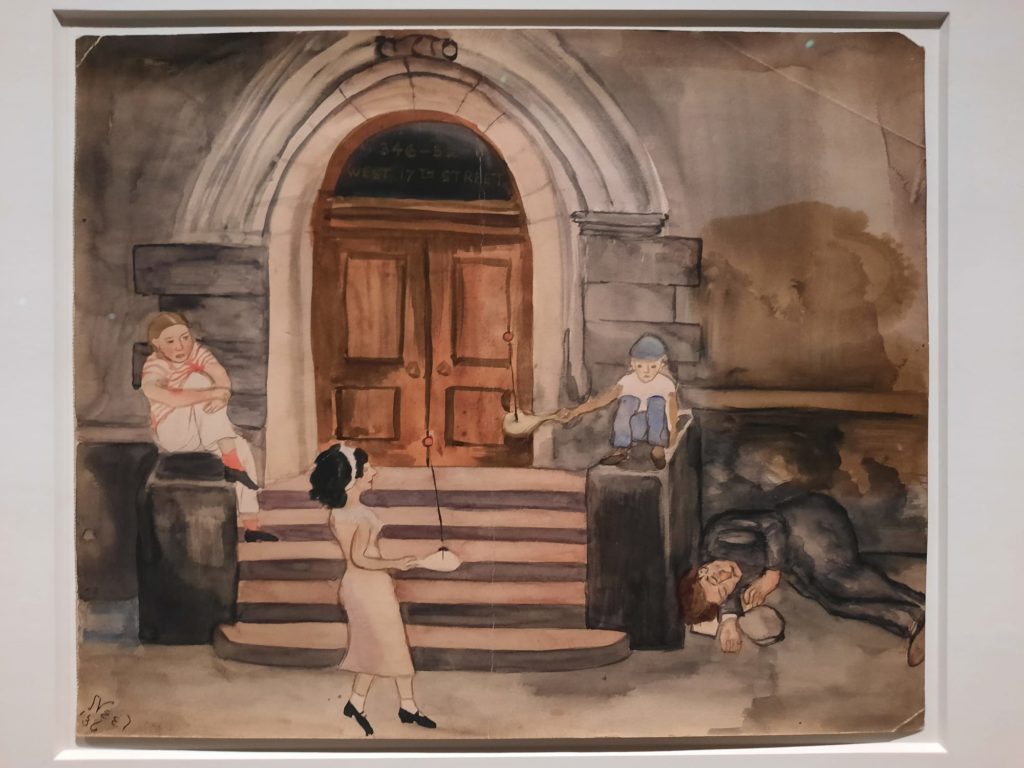
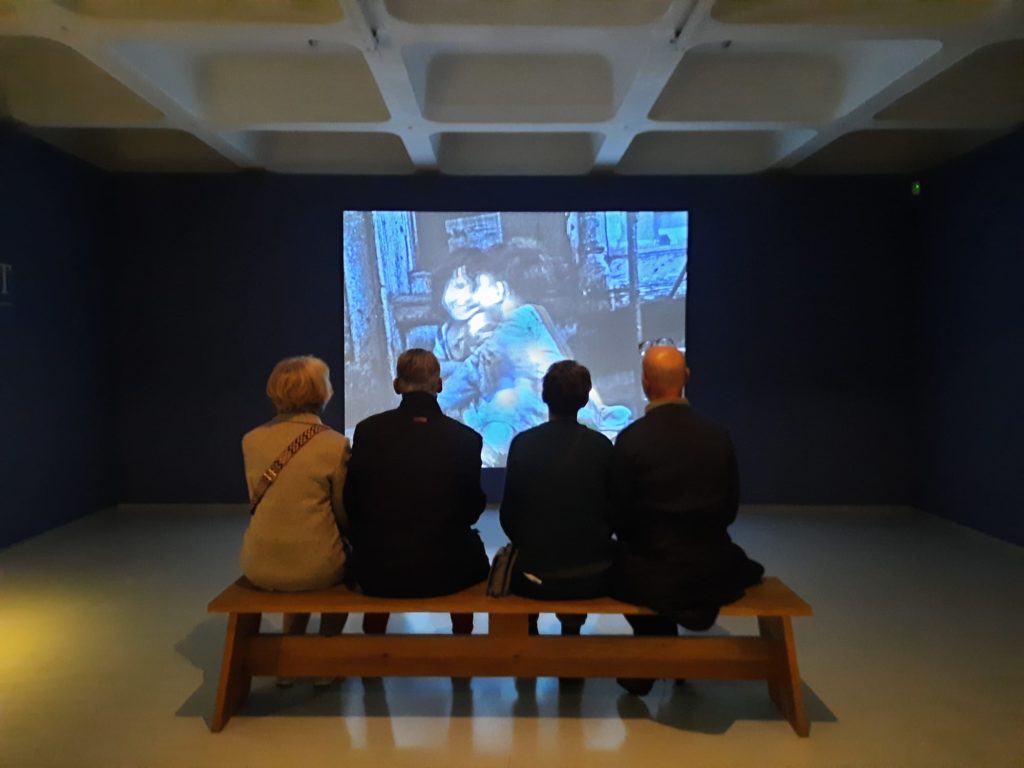

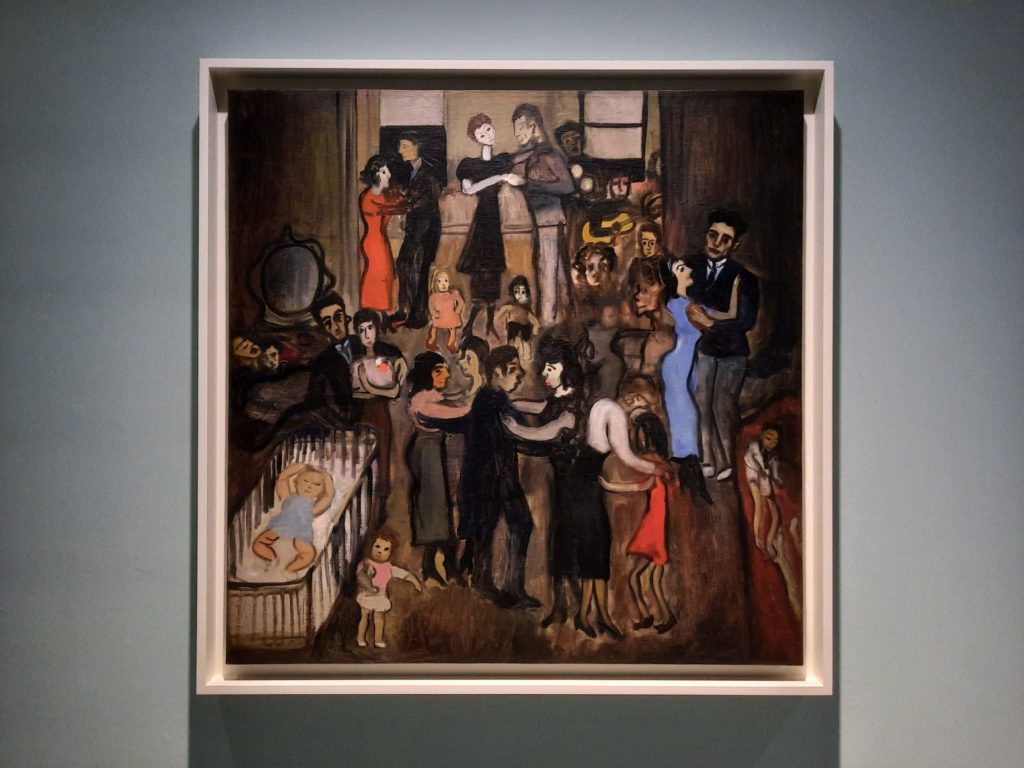
Hot Off The Griddle
The exhibition follows Neel’s life in chronological order, with one exception. The first room showcases her nude self portrait at the age of 80. This sets the scene better than screeds of text ever could. Here is an artist who paints the truth, in characteristic style and unapologetically. This was actually Neel’s first nude self-portrait. A typically straight-talking and humorous quote is on the wall opposite: “All my life I wanted to do a nude self-portrait, but I put it off till now when people would accuse me of insanity rather than vanity.”
Neel’s personality, humour and artistic style established neatly through this one painting, we then move back to the start. Works from Havana show her style emerging, supplemented by footage of pre-revolutionary life in Cuba. Her New York works depict a very Bohemian lifestyle befitting the egalitarianism of socialism. Intimate moments with friends and lovers in beatnik bedsits are painted honestly. The depictions of genitalia, especially by a female artist, were scandalous.
Her 1930s work is such a window into life in New York at the time. The government-funded Public Works of Art Project and Federal Art Project under Franklin Roosevelt afforded Neel and many other artists an opportunity to paint subjects of their own choosing rather than relying on marketable subjects or commissions. Neel, unsurprisingly, chose openly political subjects: union strikes and the growing danger of right-wing hatred. It wasn’t a lavish lifestyle – Neel lived in a modest apartment in Spanish Harlem – but it was relative artistic freedom. Footage of Spanish Harlem at the time by Helen Levitt, who moved in the same circles as Neel, is popular with viewers in this section.
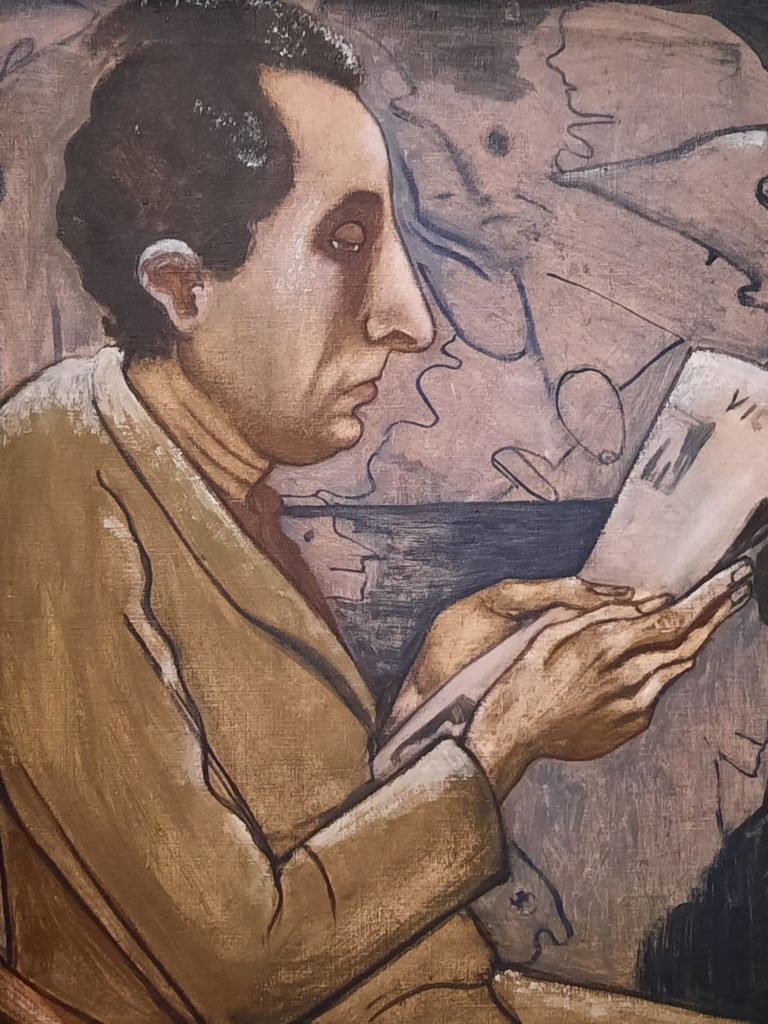


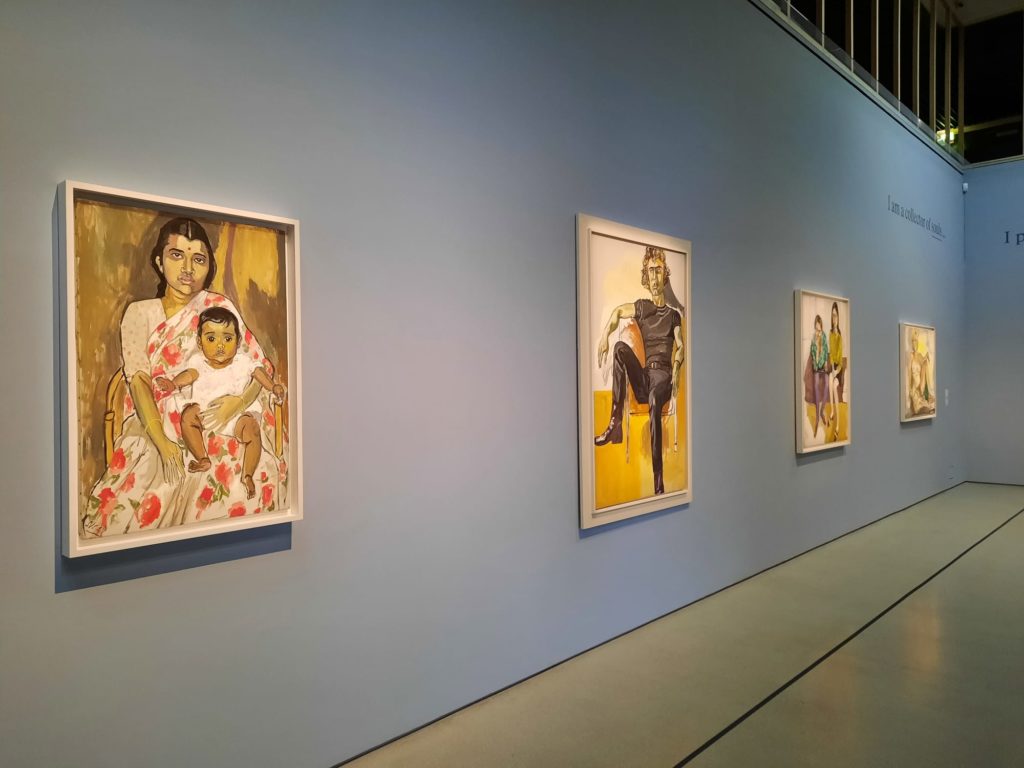
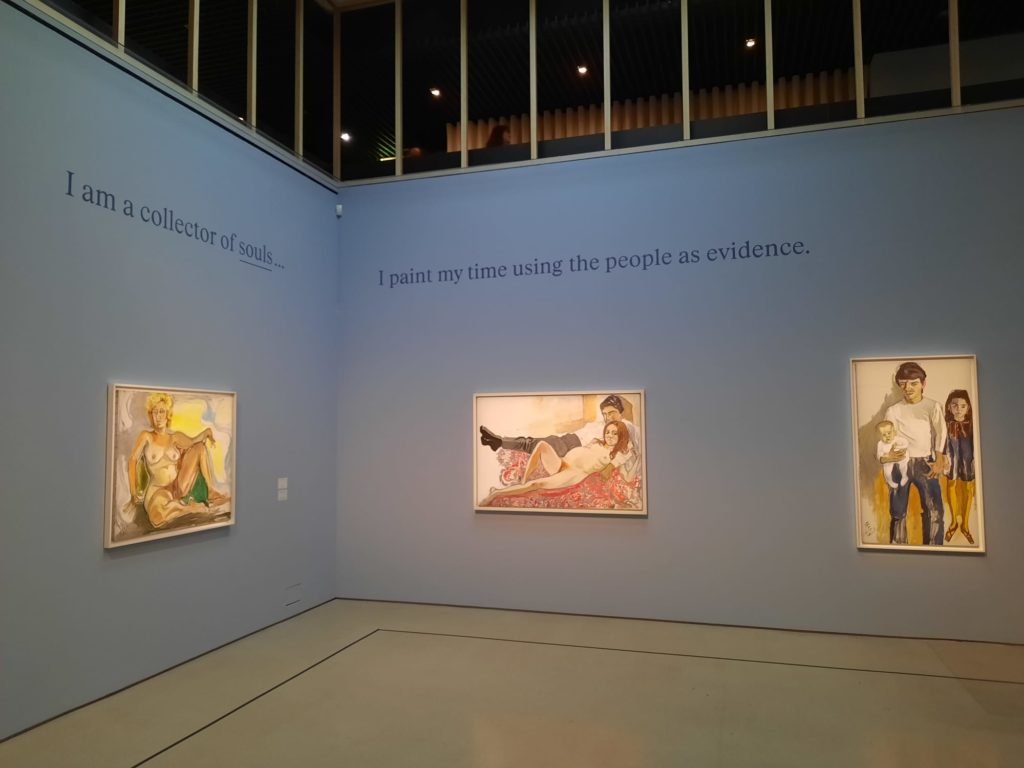
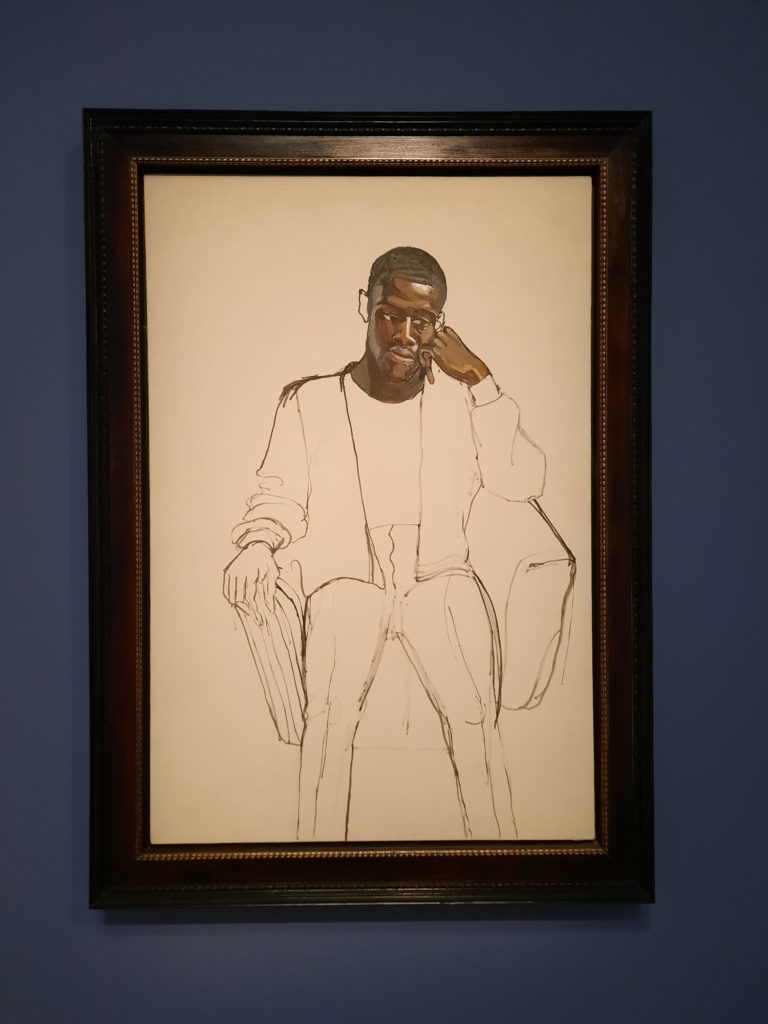
Increasing Recognition
The first half of the exhibition features few famous faces. Neel deliberately painted the people around her, often those from more marginalised groups or left-wing political figures and thinkers. After the end of the federally-funded programmes for artists Neel lived on benefits, a financially precarious situation but one which allowed her to paint and to live according to her values.
In the late 1950s a therapist encouraged Neel to be more ambitious with her work. She began to put herself out there, for instance by painting a curator at MoMA. She continued painting unknown faces alongside the more famous ones, such as Andy Warhol, who now graced her canvases. The portrait of Warhol is actually an interesting case study. Neel painted Warhol after Valerie Solanas’s assassination attempt against him in 1968. This was a deeply traumatic event for Warhol, his surgical corset and scarred body constant reminders. Yet he bared both to Neel. Her ability to connect deeply with her sitters as people is one of the major successes of her work.
I nonetheless found these later works, which fill the downstairs rooms of the Barbican’s exhibition space, a little less fulfilling than the earlier ones. I so much admired her commitment to painting ordinary people that seeing the bright and the beautiful on the walls felt like a departure. But this late ambition allowed Neel a greater measure of recognition in her lifetime, so from this perspective was a positive change.
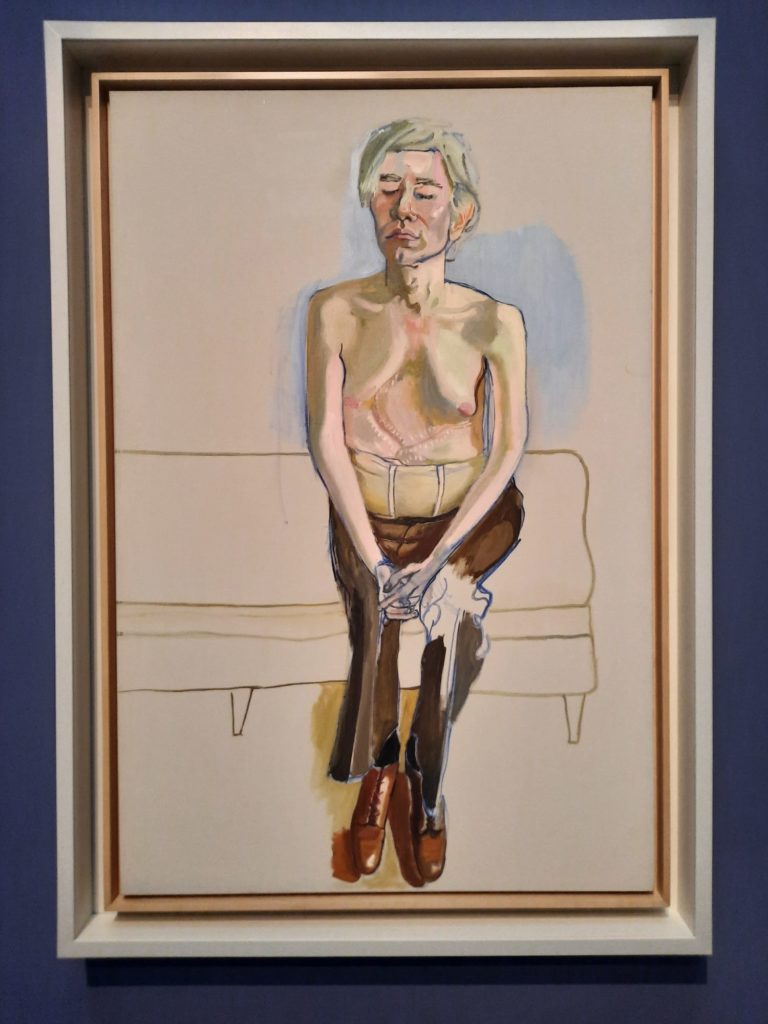
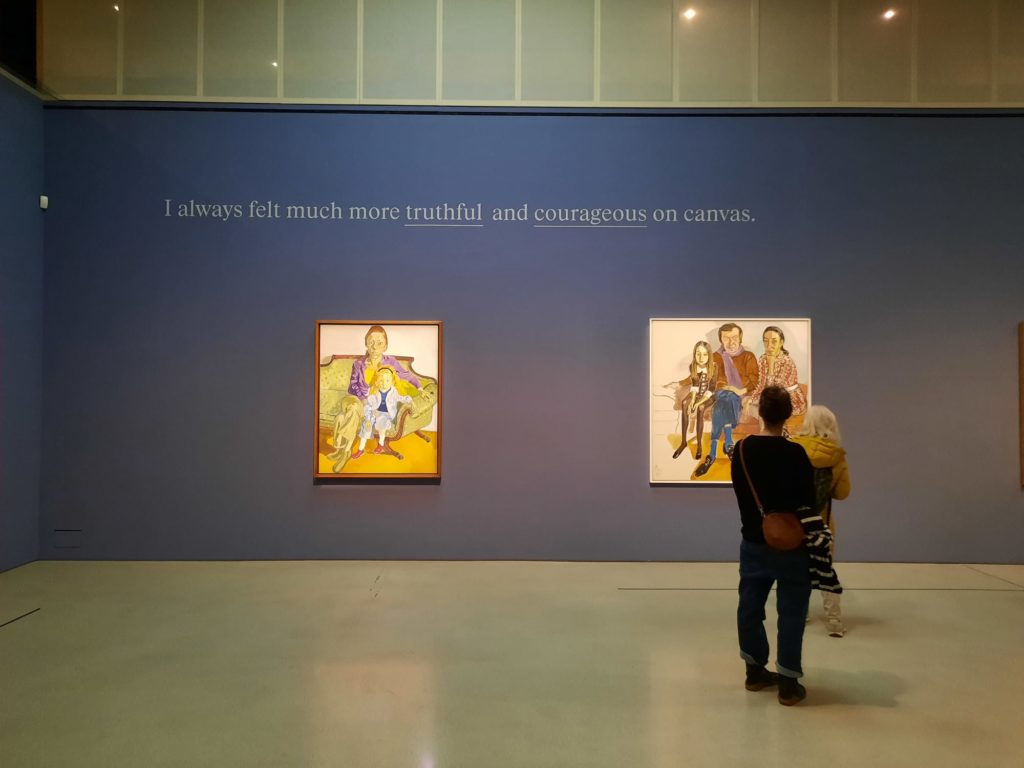


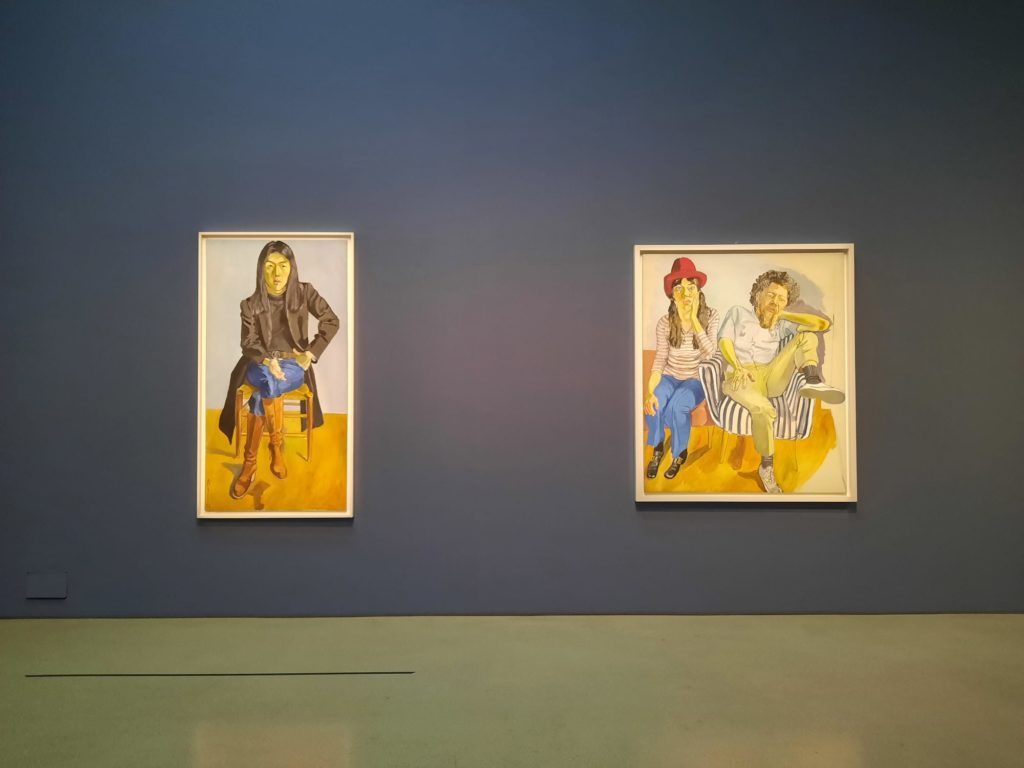
Final Thoughts On Alice Neel: Hot Off The Griddle
The exhibition is a well-curated one. There is a good selection of works from a range of sources. They have space to breathe and to speak to us. The wall texts tell an interesting story, and are supplemented by biographies of some of the sitters in the accompanying booklet (although these can be a little hard to match up).
I felt a little conflicted on the exhibition design. On the one hand it’s beautiful. Lovely soft wall colours, with the mezzanine partly screened off to create more intimate spaces. Neel never had a formal studio, so perhaps the design is meant to reflect this. On the other hand, it felt very domestic. This isn’t a problem in and of itself, but for an exhibition on a female artist to be the most domestic-feeling I can recall at the Barbican felt a little bit of a missed opportunity to subvert those expectations.
Other than this one small point, I found it an excellent exhibition. It’s worth taking enough time to take in the artworks, and also watch the half dozen or so videos. They are all well-chosen and very interesting, adding a sense of Neel’s life and times that text alone cannot convey. A life well-lived in which she achieved her aim of catching “…life as it goes by, right hot off the griddle…”.
Salterton Arts Review’s rating: 4.5/5
Alice Neel: Hot Off the Griddle on until 21 May 2023
If you see this after your page is loaded completely, leafletJS files are missing.

